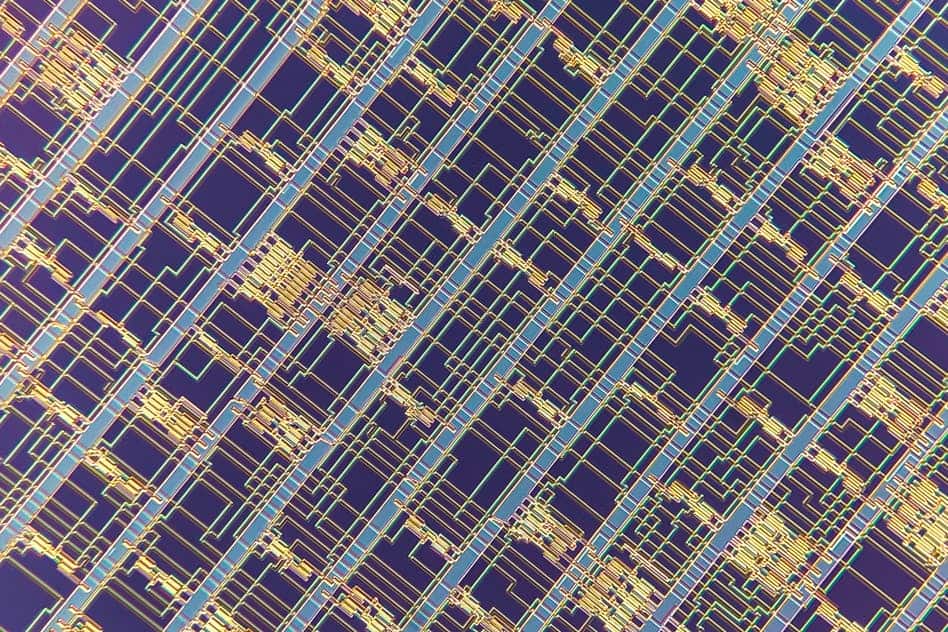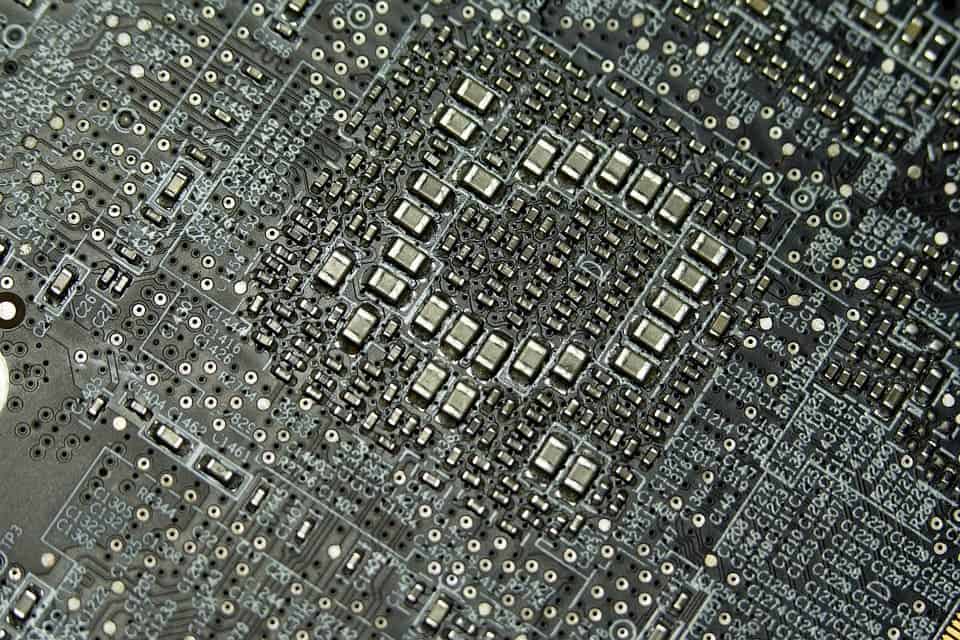A group of researchers at MIT have developed a new modern microprocessor from carbon nanotube transistors, which are widely seen as a faster, greener alternative to their traditional silicon counterparts.

A close up of a modern microprocessor built from carbon nanotube field-effect transistors. Credit: MIT
The microprocessor can be built using traditional silicon-chip fabrication processes and represents a major step toward making carbon nanotube microprocessors more practical.
Silicon transistors have carried the computer industry for decades. The industry has been able to shrink down and cram more transistors onto chips every couple of years to help carry out increasingly complex computations. But experts now foresee a time when silicon transistors will stop shrinking.
Making carbon nanotube field-effect transistors (CNFETs) has become a major goal for building next-generation computers. Research indicates they have properties that promise around 10 times the energy efficiency and far greater speeds compared to silicon. But when fabricated at scale, the transistors often come with many defects.
Researchers at MIT have invented new techniques to dramatically limit defects and enable full functional control in fabricating CNFETs, using processes in traditional silicon chip foundries. They demonstrated a 16-bit microprocessor with more than 14,000 CNFETs that perform the same tasks as commercial microprocessors.
“This is by far the most advanced chip made from any emerging nanotechnology that is promising for high-performance and energy-efficient computing,” said co-author Max M. Shulaker. “There are limits to silicon. If we want to continue to have gains in computing, carbon nanotubes represent one of the most promising ways to overcome those limits.”
But the new carbon nanotube microprocessor isn’t ready yet to take over silicon chips. Each one is about a micrometer across, compared with current silicon transistors that are tens of nanometers across. Each carbon nanotube transistors in this prototype can flip on and off about a million times each second, whereas silicon transistors can flicker billions of times per second.
Shrinking the nanotube transistors would help electricity zip through them with less resistance, allowing the devices to switch on and off more quickly. At the same time, aligning the nanotubes in parallel, rather than using a randomly oriented mesh, could also increase the electric current through the transistors to boost processing speed.
The researchers have now started implementing their manufacturing techniques into a silicon chip foundry through a program by the Defense Advanced Research Projects Agency, which supported the research.
Although no one can say when chips made entirely from carbon nanotubes will hit the shelves, Shulaker says it could be fewer than five years.






